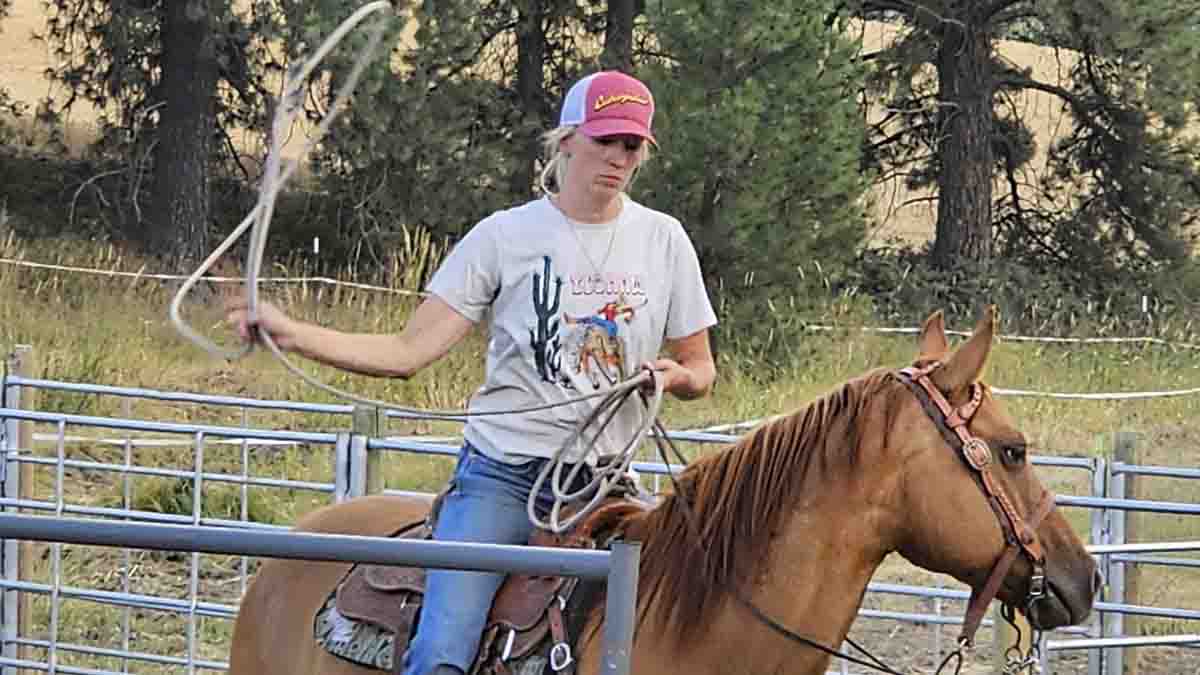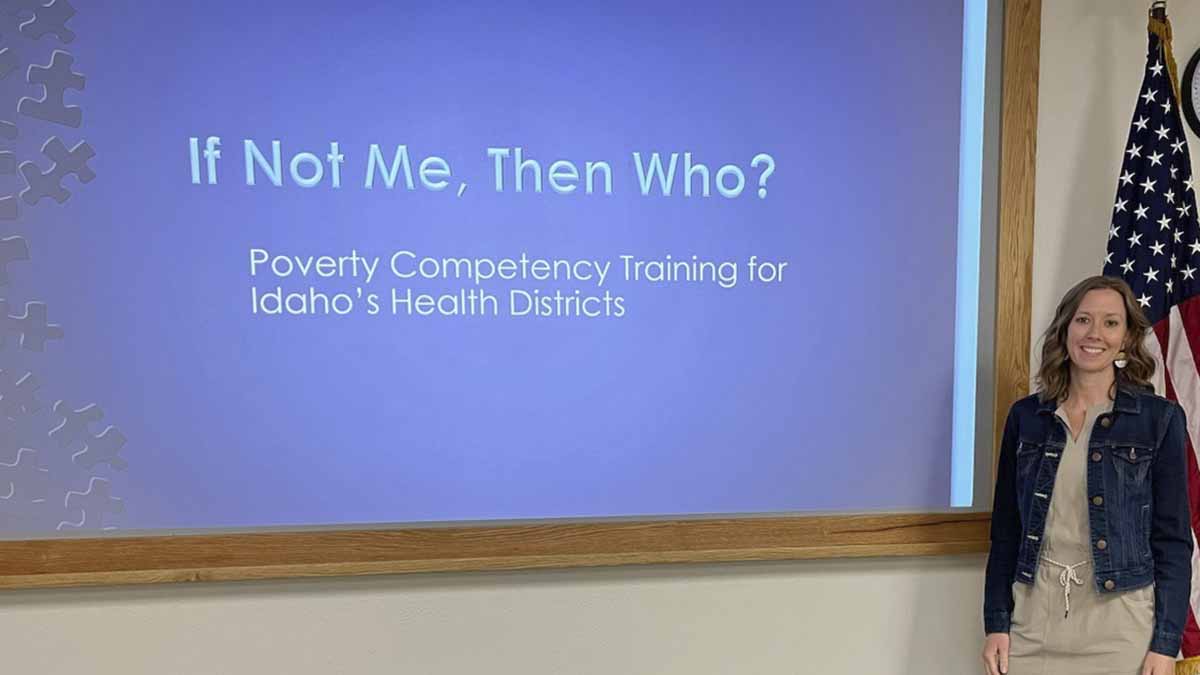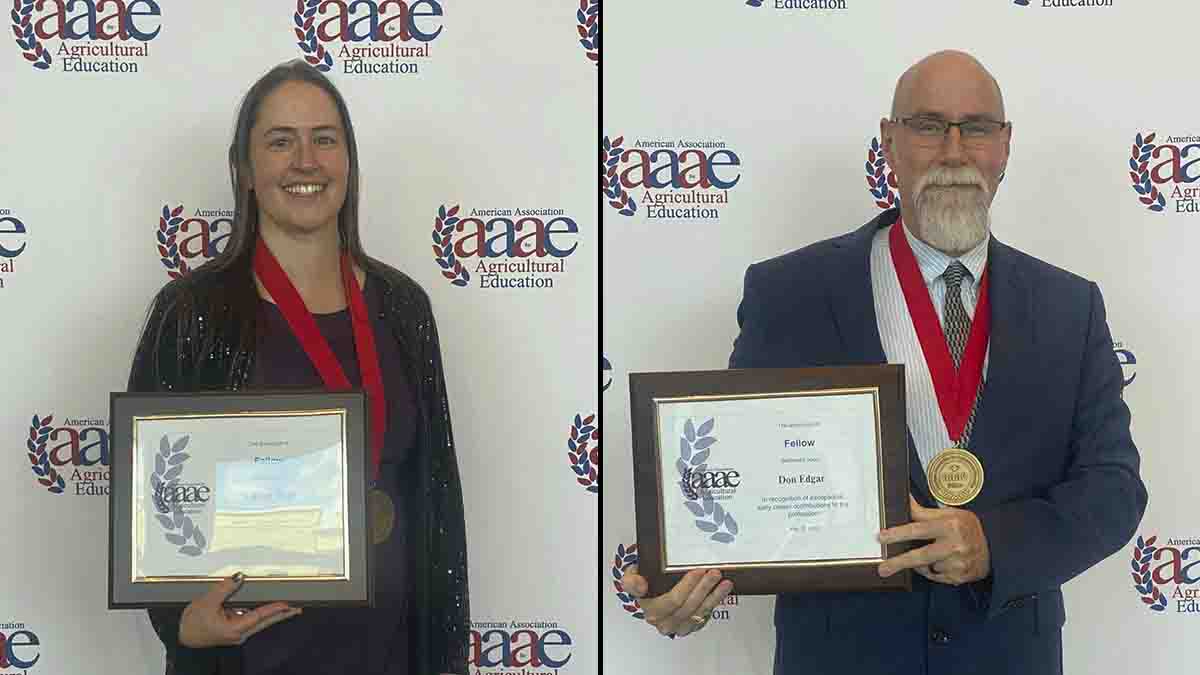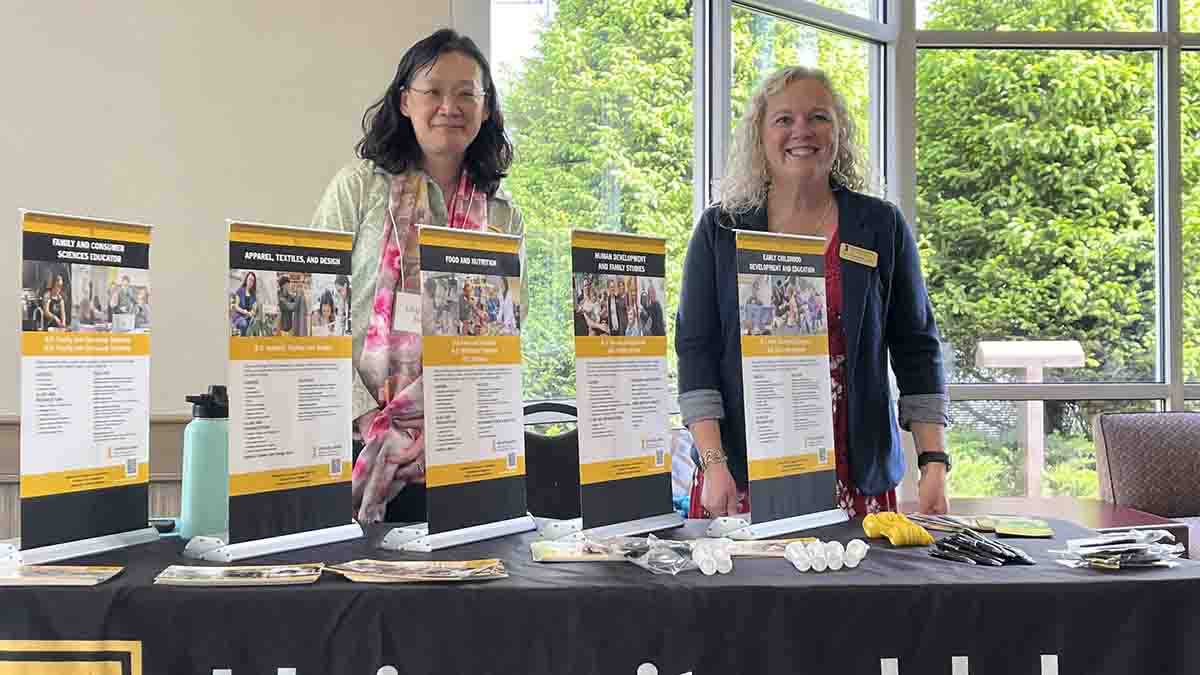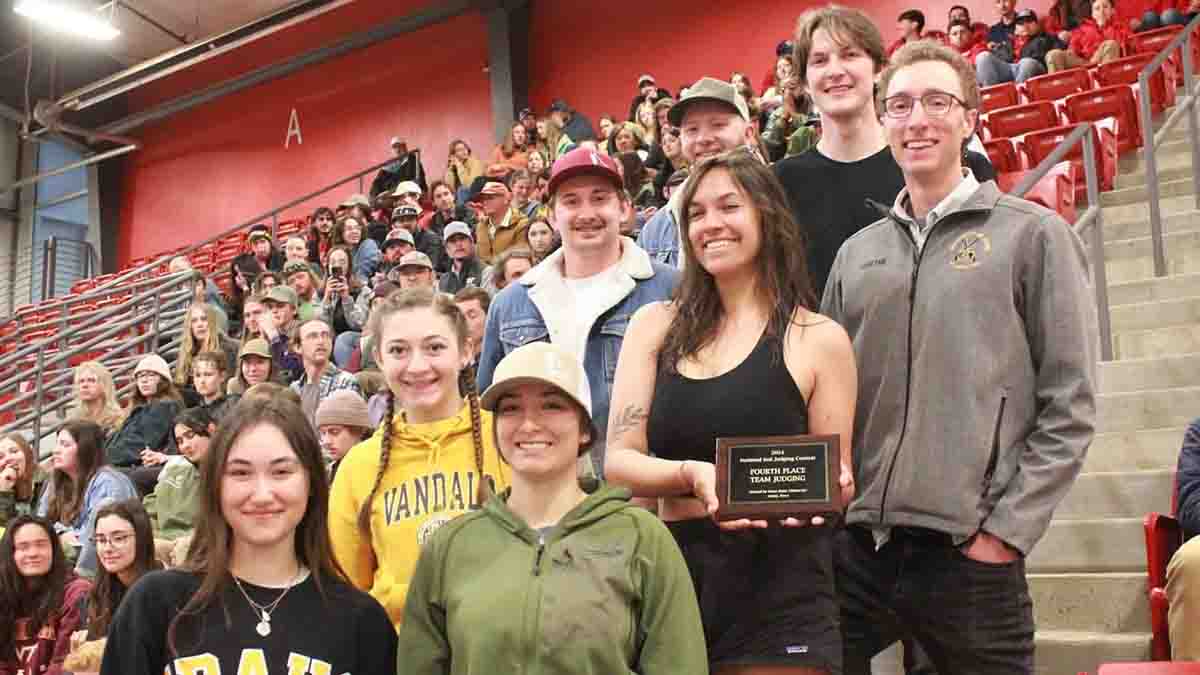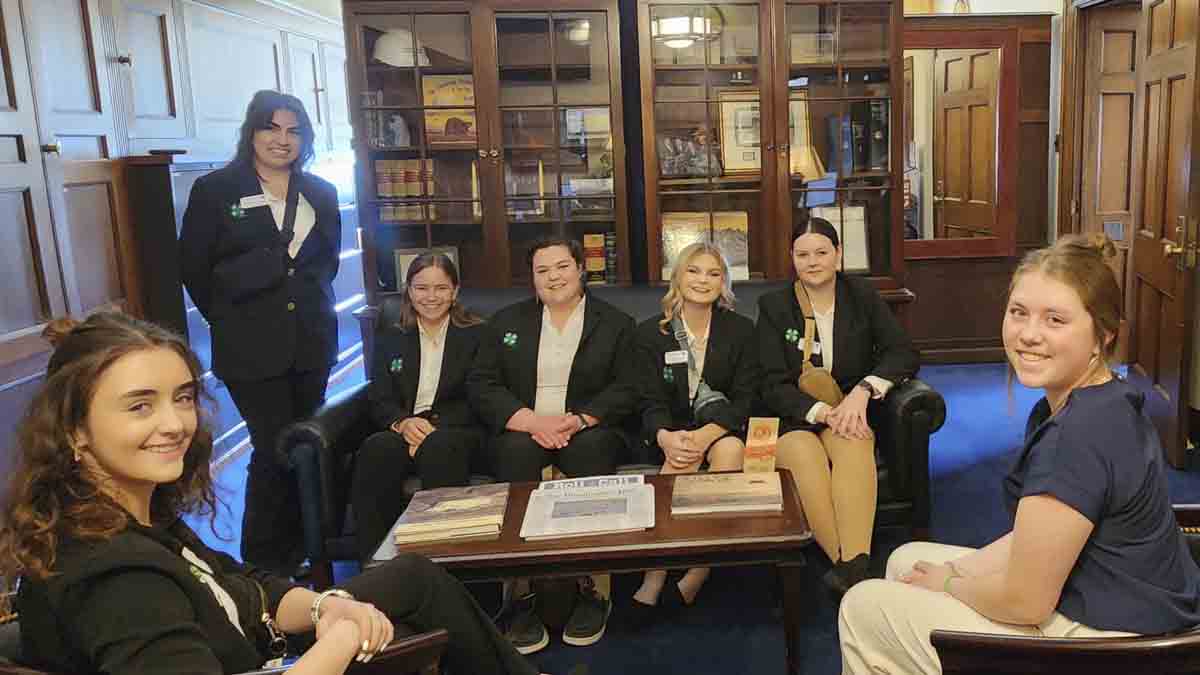Catching Up with CALS — May 29, 2024
Dean's Message — Making Waves in Water
The incoming director of our Idaho Water Resources Research Institute (IWRRI) conducted an exercise with exciting results for the state’s water users. Kendra Kaiser — a Boise State University assistant research faculty member who graduated from Duke University in 2017 with a doctorate in watershed hydrology and biogeochemistry — will oversee IWRRI from an office at the U of I Boise campus beginning in July. Kaiser recently paired the names of Idaho researchers with components of the U.S. Geological Survey’s water cycle diagram corresponding with their expertise. Remarkably, Kaiser highlighted that Idaho has experts to cover the entire water cycle with unique disciplinary perspectives. IWRRI was established in 1963 by the U of I Board of Regents as one of the nation’s 54 water research and technology centers, tasked with conducting and directing research in support of the water resource needs of Idaho, the northwest and the country.
With Kaiser on board, I’m confident Idaho’s institutions will soon be working as a cohesive unit, raising the bar for water science statewide and bringing the University of Idaho closer to realizing President Scott Green’s goal of becoming the true “University of Water.” Kaiser is uniquely suited to meet this challenge. She has vast knowledge of the subject as an expert in applied hydrology, and the credibility she’s earned will help her link researchers from different institutions to collaboratively tackle pressing issues such as flooding, water quality and competing demands on our finite water resources. In short, we accomplish more and get more grants from funding partners when we’re guided by a plan and work together, and now we’ve identified the right person to make that happen.
“We have exceptional researchers focusing on surface water-groundwater interactions, modernization of irrigation and farming infrastructure, snow science and social dynamics that drive adaptive water management,” Kaiser said. “We have all of those people in the state, so I think IWRRI can really elevate the work that folks are already doing so that Idaho can be recognized as a national thought leader (video) around water resources.”
Restoring IWRRI’s Boise presence will facilitate interactions with the Idaho Department of Water Resources and other state and federal agencies while enabling the team to engage with decision-makers who come to the capitol. We also have IWRRI team members tracking water quality challenges and other big issues affecting northern Idaho at U of I Coeur d’Alene.
Kaiser’s first priority will be to hold listening sessions and meetings with stakeholder groups throughout the state, learning their research priorities and establishing relationships that should help water scientists obtain industry backing and invaluable letters of support for their projects. Kaiser also plans to update IWRRI’s governance structure, perhaps establishing an executive board comprising business leaders and a research advisory board with representatives from Idaho universities and stakeholders.
U of I and CALS are filling several other key positions involving water resources. CALS has hired Meetpal Kukal, an assistant professor of agricultural and biological engineering with Penn State University, as a new water modeler within the Department of Soil and Water Systems. Kukal will be based in Boise and will start work in August, filling the position vacated when Richard Allen retired in 2022. CALS is seeking to hire an irrigation specialist, recognizing that Idaho has 3.4 million acres of irrigated cropland. CALS has hired Christa Howarth as a new assistant Extension water educator based in Boise. Gianluca Blois has been hired as an assistant professor in U of I’s Mechanical Engineering Department, specializing in experimental fluid dynamics, including how flow physics is affected by environmental processes. Our state’s water supply affects every resident. For irrigators, having sufficient water rights is tantamount to survival. Residential and industrial water use are also on the upswing, and maintaining adequate flows is crucial to the health of river systems and anadromous fish. At long last, however, Idaho is poised to take a collaborative approach toward addressing challenges, drawing from the strengths of all our institutions, and the U of I will be at the forefront of this effort.

Michael P. Parrella
Dean
College of Agricultural and Life Sciences
By the Numbers
Water is a precious resource in the arid West, enabling farmers to make the desert bloom. According to the Idaho Department of Water Resources, the state has 93,000 miles of rivers and streams and more than 2,000 lakes, the largest of which, Lake Pend Oreille, covers 148 square miles. It’s also 1,140 feet deep, making it the state’s deepest lake. The Snake River is Idaho’s longest river, stretching 779 miles. The annual stream inflow to the state is about 37 million acre-feet, and the annual stream outflow is about 75 million acre-feet. Idaho has about 3.3 million acres of irrigated land of which 3 million acres are irrigated from the Snake River system. Idaho’s active reservoir storage capacity is 12.384 million acre-feet. The Snake Plain has a vast aquifer with 100 million acre-feet of storage within its top 100 feet. Idaho’s average annual precipitation varies throughout the state from less than 10 inches to more than 60 inches.
Our Stories

Raring to Rodeo
Coach Jamie Slocum knows her ambitions are bold and hard work will be in store for her team — but it’s not her first rodeo.
As a student athlete in the spring of 2011, Slocum had a meager budget and encountered one barrier after another when she somehow pulled together the University of Idaho Rodeo Club’s first home competition in more than a decade.
Slocum now aims to grab the bull by the horns as the new coach of the club, housed within the College of Agricultural and Life Sciences, and repeat history. Next fall — if all goes as planned — the club will again host U of I’s first home rodeo in more than a decade under her leadership. Pulling off a successful rodeo could also give a needed jolt to the National Intercollegiate Rodeo Association’s entire Northwest Region, which includes mostly community colleges and has struggled with participation.
“Within our region we’re not able to recruit for rodeo because we’re not able to host rodeos,” Slocum said. “A lot of people don’t even know the rodeo club exists, and if they knew U of I had a rodeo team I think they would be likely to support it.”
Slocum, ’11, agriculture industry management and communications, works as a seed treatment agronomist with McGregor Co. In college, she competed in goat tying and barrel racing.
Slocum contacted the club’s student leaders last fall and offered up the 150- by 200-foot roping arena at her Palouse home for their occasional practices, along with the use of six steers and five calves.
The club jumped at the offer and also roped Slocum into sharing her expertise. She’s now coaching alongside Alan Chipman, who affiliated with the club seven years ago, along with his late wife, Tammy.
“I am thrilled to have Jamie Slocum come on because she knows so many contacts in the area that I am not aware of. That’s opened a whole bunch for us,” Chipman said. “She makes a great addition, and I don’t have to try to get steers and cows for practice at my place.”
Slocum plans to start bringing professional rodeo athletes to work with the team during future practices.
The club’s advisor is Stacey Doumit, senior instructor within the Department of Animal, Veterinary and Food Sciences.
“With Jamie as one of their coaches, they’ve got some good momentum going, and I’m super excited for them,” Doumit said.
As an athlete, Slocum joined the club in 2008, when she transferred to U of I from Spokane Community College. She was the club’s president during her senior year, in addition to participating in the Student Idaho Cattle Association. Her primary goal as president was to host a home-based rodeo — something that hadn’t happened in years that she believed would revitalize the program.
Through her involvement in the Palouse Empire Fair, Slocum received a discounted rate to use the arena at the rodeo grounds in nearby Colfax, Washington. The team also found donors to supply hay for horses and livestock, and they got a good deal on a livestock contractor through a club member.
The weather didn’t cooperate, however. Prior to the event, they pumped moisture from a soggy hay field designated as their parking area, but ultimately had to bring in tractors to pull out pickup trucks that got stuck in the muck. It was cold and snowy on the first day of the rodeo, and their crowd was small. Yet they met their goal of hosting a qualifying rodeo for nationals.
“The amount of work that went into it is why I think one hasn’t happened since then,” Slocum said.
The spring season has finished and the club is aiming to host a home rodeo at the Lewiston Roundup Grounds next fall. The students will be active in fundraising and approaching area businesses for sponsorships in the meantime. Slocum believes elevating the rodeo team’s profile would help attract students who are active in the sport to U of I.
About two decades ago, U of I hosted a successful regional rodeo in the Kibbie Dome. Eventually, Slocum would like to help restore a regional rodeo at the Kibbie Dome and make it the season’s first competition. The club has 13 members, nine of whom are enrolled in CALS. During the regional finals rodeo in Hermiston, Oregon, team members Katelyn Hurl and Lauryn Riney, both CALS students, qualified to compete in barrel racing at the College National Finals Rodeo, which will be hosted in Casper, Wyoming, in June.
“Now that I’ve got to watch them and coach them, they have a lot of potential,” Slocum said. “They are doing really well for the resources they have compared with the other schools that have practices every week.”

Passion for Water Law
Austin Durglo set the course of his career and found a means of contributing to his Native American community while taking a water law class at Salish Kootenai College of northwest Montana.
In pursuit of becoming a water attorney, he enrolled in a unique dual program at the University of Idaho. He was one of two students at the university’s May 11 commencement ceremony to receive both a master’s degree in water resources: science and management emphasis and a juris doctorate in law.
Durglo is a member of the Confederated Salish and Kootenai Tribes of northwest Montana and aims to become licensed to practice water law throughout the Pacific Northwest.
“I took a water law class at the end of my bachelor’s degree and had an explosion of interest of not only how complex water law can be, but also the differences in each state,” Durglo said. “My goal is to really work with tribes in some fashion, directly with them or as a consultant. Tribal water rights are much different than any other water rights. I found it interesting to learn the history behind that and really understand what that means.”
Durglo grew up surrounded by freshwater lakes, streams and rivers and initially wanted to become a hydrologist, but after reading a few cases on water law, his career goals changed as he wanted to have an opportunity to return to his reservation and guide important decisions, while also helping people resolve challenges regarding a scarce and vital resource.
“I realized I would be able to make a more significant impact as an attorney rather than a hydrologist and could play a role in shaping laws and policies of how things are done on the reservation,” Durglo said. “I think that’s why I chose law school over a career in science but still enjoy learning about science and hope to incorporate that knowledge as I enter my career in water law.”
Prior to enrolling at U of I, Durglo moved to Moscow for an internship with the Rocky Mountain Research Station (RMRS), which is a research entity under the U.S. Forest Service devoted to improving the health of forests and grasslands. Durglo spent a summer collecting data from designated research plots within wildfire burn areas.
Erin Brooks, a professor within U of I’s Department of Soil and Water Systems, often collaborates on research with RMRS and recruited Durglo to become a Vandal.
Durglo chose U of I because it was one of the few schools offering the degrees he sought as a dual program. Taking them concurrently allowed him to complete his studies a year sooner. Durglo also appreciated the small class sizes with renowned faculty at U of I, as well as the chance to study in a state with countless real-world examples of the natural resources issues he studied in class.
“If you are looking to hire somebody, that understands the science and potential legal connotations natural resource management brings, this is a great program. What a great, rounded background and education,” Brooks said. “The law degree itself is a challenge, and to put another master’s next to it is pretty astonishing to me.”
Demand for attorneys with expertise in water management should continue to mount as demand for water increases.
“We are in for a looming trainwreck in the State of Idaho in terms of our water management,” Brooks said. “There are going to be some hard decisions and there is going to be some litigation to determine the fate of water use and allocation.”
Durglo’s research at U of I focused both on the legal aspects and the management side of water resources. For his master’s thesis, he helped test the U.S. Forest Service’s Water Erosion Prediction Project (FS-WEPP) model, a predictive model guiding erosion management decisions in post-wildfire settings.
The model he helped improve can predict erosion and runoff from burned areas that have been salvage logged and can be used as a tool to predict sediment delivery into important waterways and help protect the environment. His focus was on how heavy logging equipment influences erosion and how the model interface predictions compare to erosion data collected in the field. He’s also studied the effectiveness of modeling methods that were used in the research plots for mitigating skid trails, such as piling slash on them to increase ground cover.
The model was originally released in 1995 to assess erosion from Midwestern cropland. It was adapted for use in forest land about 15 years ago — evaluating how slope, soil type, weather, cover type and other factors influence runoff and erosion. The model draws weather trends from the National Oceanic and Atmospheric Administration database and can quantify the percentage risk of erosion associated with various management scenarios.
Durglo and researchers from several other institutions have partnered with the Rocky Mountain Research Station on updating FS-WEPP and creating a cloud-based interface to enhance the user interface. Durglo and other researchers participate in weekly calls to update progress and troubleshoot the model.
In addition to his work on water modeling, Durglo reviewed court challenges brought against the U.S. Forest Service for awarding past salvage logging contracts to understand some common themes in the lawsuits. He concluded lack of sufficient environmental analysis is a primary reason why salvage logging project approvals are stuck down in court, demonstrating the importance of accurate modelling tools such as FS-WEPP.
Durglo is scheduled to take the Idaho bar exam in late July. In the fall, He will begin a judicial clerkship in U.S. District Court in Great Falls, Montana, aiding a judge with research and preparations.

Coaching Poverty Competency
A University of Idaho Extension team is training health partners throughout the state to better recognize and remedy latent biases hindering how well they serve the 43% of Idahoans whose incomes are insufficient to cover basic needs.
UI Extension’s certified poverty coaches have also been providing poverty competency training to colleagues in other Extension programs to ensure their approaches toward assisting people experiencing poverty are based on facts and science rather than myths and stereotypes.
Lindsey McConnell-Soong, Extension Collaborative on Immunization Teaching and Engagement (EXCITE) program manager; Tasha Howard, UI Extension educator for Canyon County; and Joey Peutz, UI Extension educator for Payette County; are the program’s leads and were the first within UI Extension to complete training through a consulting firm devoted to breaking the cycle of poverty in America, called Communication Across Barriers.
UI Extension received $100,000 over 18 months through EXCITE to implement an immunization education campaign. The USDA National Institute of Food and Agriculture and the Centers for Disease Control and Prevention collaboratively created EXCITE in response to the COVID-19 pandemic, seeking to establish a nationwide adult immunization program.
A major barrier affecting vaccination rates among low-income residents is the lack of understanding about poverty among Idaho health care providers. McConnell-Soong, Howard and Peutz have worked closely with the South Central Public Health District and Southwest District Health, where they’ve trained 132 staff members to adapt poverty-informed outreach strategies.
“Part of what we’re hoping to coach local health department staffs in is recognizing how to identify those barriers that people are facing and be able to then assist them in finding the resources that might not be directly related to immunization but do act as barriers in keeping up with health factors,” McConnell-Soong said.
People living in poverty face countless barriers that are often overlooked by healthcare providers that make leading a healthy lifestyle more challenging, such as income level, lack of transportation, lack of healthcare access and poor access to healthy food.
“We’re offering health departments a lens through which to do their work with this population of low-income Idahoans. They’re one of the hardest populations to reach and have success with,” McConnell-Soong said. “When we come at something from a middle-class framework and lens, we can’t develop something through that lens for people who aren’t living in that space.”
Those who complete the training often acknowledge discovering biases about people living in poverty they were previously unaware they possessed. For example, it’s a common myth that parents living in poverty fail to feed their children a wide variety of fruits and vegetables because they lack knowledge about a healthy diet. In truth, many of them can’t afford to experiment with foods their children might simply throw away, or they might not have access to stores with a good selection of fresh produce.
“Most people generalize or base their knowledge of individuals living in the crisis of poverty on what they see and hear from the media,” Peutz said. “Many myths can be dismissed with evidence-based facts.”
Both participating health districts have changed approaches in response to the training.
“We’ve seen health districts adjust and think through their processes to really support and be accessible to someone living in poverty,” Howard said. “For someone in the war of poverty, making health decisions might not be the top priority, so digging into the details and experiences of those who live in poverty helps health educators understand how best to provide support.”
UI Extension has received many additional requests for poverty training from other health care providers in response to the success of the EXCITE program. Using internal Extension dollars, 10 additional poverty coaches have been trained to continue the program, bringing the total number of certified coaches to 13.
Training sessions can range from two to eight hours in duration. McConnell-Soong provided a four-hour training session to about 20 participants from Western Idaho Community Health Collaborative, which represents several area health agencies. In mid-May, McConnell-Soong and Peutz presented about poverty coaching at the 2024 National Health Outreach and Engagement Conference in Greenville, South Carolina. McConnell-Soong has facilitated a workshop on poverty and trauma for University of Nebraska-Lincoln's Expanded Food and Nutrition Education Program team. Leaders with a third of Idaho health district have also expressed interest in the training.
Within University of Idaho Extension, 16 staff members with the Digital Economy Program participated in an eight-hour poverty training. Several AmeriCorps workers involved in Extension efforts received an hour-long introductory poverty training, and AmeriCorps is mulling broadening the training to staff outside of Extension. They’ve also offered workshops to 4-H and Eat Smart Idaho staff. They’ve set a long-term goal of having every UI Extension employee complete a one- to two-hour poverty training webinar.
UI Extension previously implemented two other EXCITE programs that spanned from May 2021 through June 2023 which involved hosting 18 mobile vaccine clinics for agricultural workers.
Faces and Places
Kattlyn Wolf, professor and interim department head of Agricultural Education, Leadership and Communications (AELC), and Don Edgar, professor in AELC, were honored as American Association for Agricultural Education Fellows. Fellows are members of the association who have made exceptional contributions to the impacts on the profession and AAAE, with 10-20 years of active service at the university level.
Ling-Ling Tsao and Sara Matthews in the Margaret Ritchie School of Family and Consumer Sciences worked with IdahoSTARS to host the 3rd Annual Early Childhood Conference, held May 18 in Coeur d’Alene. Over 100 early care and education professionals attended.
The CALS Soil Judging Team placed fourth in group judging and 6th overall at the 2024 National Collegiate Soil Judging Contest held in Ames, Iowa. Tegan Macy, a sophomore from Culver, Oregon studying crop science, placed fifth in the individual contest. Also competing for U of I were Sky Reinhardt, a sophomore from Bonners Ferry studying agricultural systems management; Ellie McKnight, a senior from Donnelly studying environmental science; Daniel Brereton, a senior from Lewiston studying finance; Tobee Holman, a sophomore from Rigby studying agricultural systems management; and Jacob Flick, a junior from Gooding studying mechanical engineering. The team is coached by Paul Tietz, a soil and land resources doctorate student and MaryBeth Gavin, a soil and land resources master’s student.
Gail Silkwood, UI Extension educator, Ada County, recently took the Idaho 4-H State Teen Association officer team and two 4-H delegates to the National 4-H Conference in Alexandria, Virginia. The team included Cassie Coelho, of Jerome; Shawnee Ortega, of New Plymouth; Elizabeth Wisniewski, of Wendell; Kyra Fowler, of Rupert; Ainsley Erwin, of Bruneau; Elise Aiken, of Lewiston; and Lizzie Mueller, of Salmon. The conference is sponsored by the U.S. Department of Agriculture’s National Institute of Food and Agriculture. The Idaho delegation presented to the U.S. House of Representatives, USDA and Peace Corps.




Events
- May 31-June 1 — Walla Walla and Red Mountain Vineyard and Winery Tour (pdf), leaves Moscow for southeastern Washington at 8:30 a.m.
- June 4-7 — Idaho FFA State Career Development Events, Moscow
- June 18-19 — Western Wheat Workers Meeting, Idaho Falls, Aberdeen
- June 18-19 & July dates — Cereals Field Days (pdf), various locations
- June 22-23 — Grass Identification Course, Rinker Rock Creek Ranch near Hailey
- June 24 — Soil Health and Cropping Systems Tour, 8 a.m. to noon, Genesee
- June 24-26 — Data Monitoring Blitz, Rinker Rock Creek Ranch near Hailey
- June 24-27 — Idaho 4-H State Teen Association Convention, Moscow
- June 26 — Farm Stress Workshop, Twin Falls
- July 8-10 — Beef 101: Beginning Rancher Development Program, Moscow
- July 17 — Twilight Tour, Aberdeen Research and Extension Center







